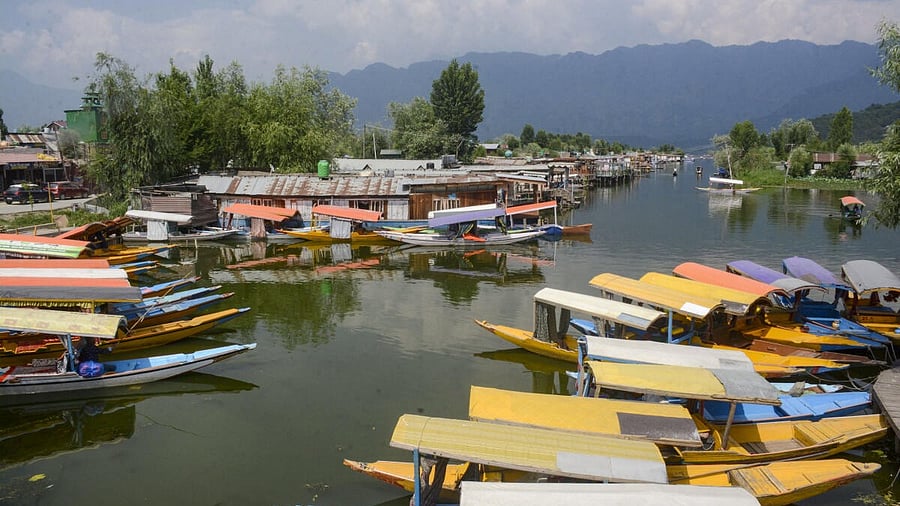
Shikaras anchored in the Dal Lake, amid a decrease in number of tourists following the Pahalgam terror attack.
Photo for representational purpose.
Credit: PTI photo
Srinagar: Nearly two months after the April 22 terror attack in Pahalgam’s Baisaran meadows that left 25 tourists and a local resident dead, the Jammu and Kashmir administration has reopened 16 tourist destinations across the Union Territory following a detailed security review.
But the question remains whether the move alone will help restore the shaken confidence of tourists, or will fears of safety continue to cloud Kashmir’s peak travel season?
The reopened sites include some of the most popular destinations in south Kashmir’s Anantnag district—Betaab Valley, local parks in Pahalgam, Verinag Garden, Kokernag Garden, and Achabal Garden. In total, over 40 tourist spots, including key public parks, were shut down in the wake of the deadly attack. Officials say the remaining destinations will be reopened in a phased manner after fresh security assessments.
Announcing the reopening, Lieutenant Governor Manoj Sinha Saturday said the administration was committed to ensuring the safety of tourists and reviving the local economy, which depends heavily on tourism.
“Tourists are arriving in large numbers. The central government is also facilitating official visits and parliamentary delegations, which will further boost confidence and drive tourism growth,” Sinha said. He added that security has been significantly ramped up across all tourist sites.
However, industry stakeholders remain cautious. Many believe that the reopening of destinations, while necessary, may not be sufficient to immediately revive traveller confidence, especially after the scale and nature of the April attack.
“The reopening is a step in the right direction, but tourists are still wary,” said Athar Ahmad, a travel consultant in Srinagar. “They want more than just statements. They want to see visible security, quick response teams, and clear protocols for emergencies.”
The attack, which occurred just as Kashmir was entering its busiest tourist season, led to widespread cancellations. Tour operators say bookings by families and group tours from metro cities took the biggest hit. The psychological impact of the violence, they say, has created a barrier that won’t be easy to overcome.
“There’s still a lingering fear. We need confidence-building measures like tourist insurance, verified guides, and better coordination between police and hospitality services,” Ahmad added.
Tourism remains a cornerstone of the economy in Jammu and Kashmir, especially in the Valley, where thousands of families depend on it for their livelihood. After a prolonged slump due to the COVID-19 pandemic and the uncertainty following the abrogation of Article 370 in 2019, the region saw a strong revival in 2022, 2023, and early 2024. This year was expected to break previous records—until the April attack disrupted those projections.
All eyes are now on the upcoming Amarnath Yatra, scheduled to begin on July 3. A peaceful and incident-free pilgrimage could serve as a major confidence booster, not just for devotees but for the wider tourist community. Officials believe its successful conduct will be a key in re-establishing Kashmir as a safe and welcoming destination.
The reopening of tourist sites marks a beginning—but the road to regaining trust may still be a long one.